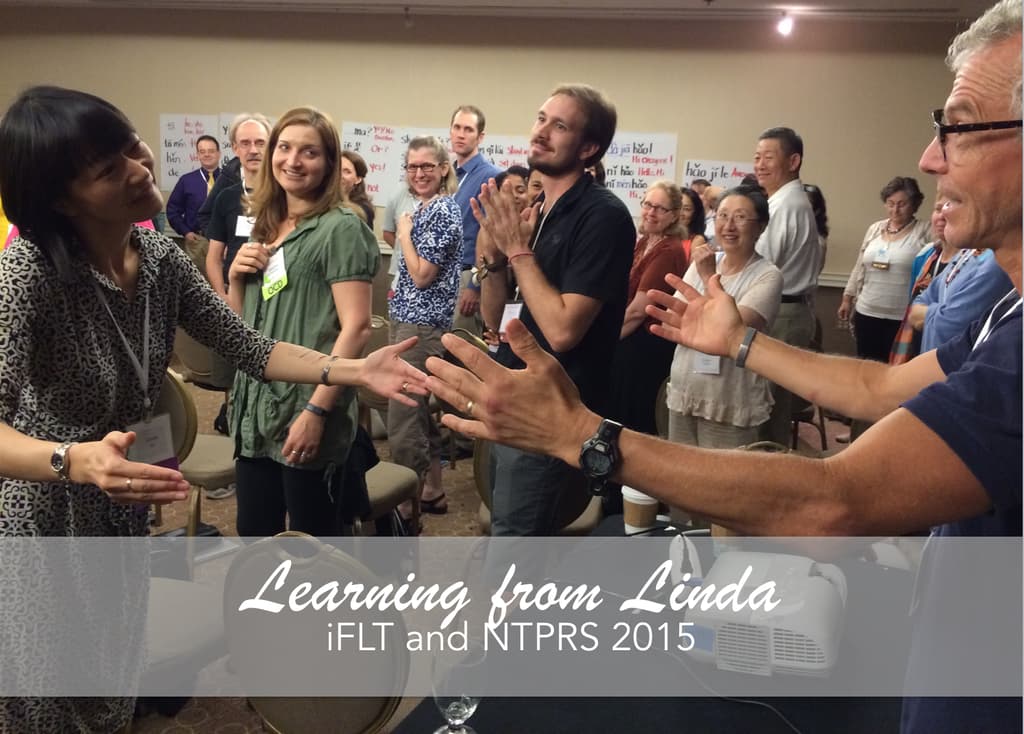That's a wrap! The big summer CI conferences are done. It was a busy two weeks for me and for many other presenters and attendees that were present at both conferences. I am exhausted, overwhelmed with new ideas, and nostalgic thinking back on all of the new friends that I made that I won't see for another year.
I have a few posts planned for some 'big' ideas from the conferences, but for now I'll focus on the basics: how to help your students succeed when you are providing any form of oral input (story asking, PQA, etc.)

When I first learned TPRS/CI, I did so sitting in Russian demos by Michele Whaley. I always thought that I was really good at learning languages--you know, a really fast processor! As it turns out, Michele is just a really, really great teacher. Over the years, I have discovered that I'm not a fast processor at all. I'm the 'barometer student' in any given group. This has been helpful for me as a teacher, though, because I have recognized the strategies and skills employed by teachers like Michele that help me to be successful. I wasn't able to sit in on Linda Li's classes at iFLT, but I attended her Mandarin classes at NTPRS. Like Michele, she made me feel like a rockstar student!! Here's what makes the difference:
- When you first introduce a new target structure (establish meaning), do not let your students repeat it after you in the target language--not even if they want to!!! Enforce a mandatory "silent period" in which they listen and watch you. I never really understood why some teachers do this (I always allowed my students to repeat if they wanted to), but I realized in Linda's classes that my own attempt to pronounce the new structure and hearing the students around me do the same was quite distracting. My focus shifted from matching meaning with the sounds that I was hearing to analyzing how the sounds were being made. After awhile, there was nothing that Linda or the students could do to stop oral responses (both repetition and unique language), and she no longer enforced silence. It felt like a dam had broken and the language was pouring out of our mouths whether we liked it or not!
- Point and pause, point and pause, point and pause. I don't care how many times you have done it, keep doing it. I--the barometer student--desperately need the support. I sat in on several sessions in which the presenter was focusing on an advanced skill of some kind and so out of necessity had to rush through the establishment of meaning and initial repetitions. Many others in the class were able to follow along with the language required to complete the advanced activity, but I was left confused and frustrated, searching the boards for the translations of the words that were flying at me rapid-fire in the target language. Again, Linda Li was such a master at this skill. She spoke and moved slowly, allowing me to follow her index finger and easily find meaning for everything that she said.
- Affirm your students when they indicate that they are confused. Most teachers establish a signal at the beginning of the year that their students use to show that they do not understand whatever was just said in class. (Check here for ideas.) Of course, it's pretty embarrassing to signal that you're confused when everyone else around you appears to understand everything. Linda used several strategies to help us feel comfortable admitting our confusion. First, she "drilled" the skill: several times, she broke into language that she KNEW that we didn't understand, and she waited for someone to signal that they were lost. When they did, she affirmed and congratulated them: "Great job!" and a high five. Then, she clarified the meaning or backtracked to a point at which that person did understand. This led to a class full of students that were quick to signal when their comprehension broke down!
- Limit your structures. I don't care how badly you want to bring in a new word to make your story better; stick to what you planned and only bring in new words that you absolutely must. Linda used the structures "looks", "gives", and "walks" (among others), and in a little vignette one of her characters looked at a coffee but the coffee-holder did not give it to him. I wanted to badly to add in the words "takes" or "asks", but Linda showed me that it was totally unnecessary! In fact, not adding in new words to narrate every aspect of a story allows students to exercise their imagination and fill in the details on their own. By sticking to the target structures and limiting the new vocabulary that you bring in, you can get more repetitions of the target structures and allow students the freedom to imagine.
Stay tuned for more posts from the conferences and the remaining posts in the TPRS® 101 series--I'll be publishing them slowly but surely now that I am back home and somewhat in a routine. And if you haven't yet registered--I'll be at ACTFL in San Diego this November and would love to see you there! I was planning to present at CSCTFL/OFLA in Columbus, but apparently I'll have a four-week-old, so I had to cancel my presentation for the 2016 conference, but you should definitely attend that conference as well. It's a great one :)




